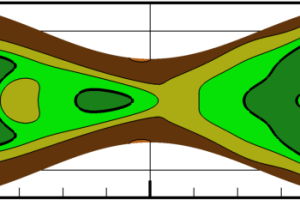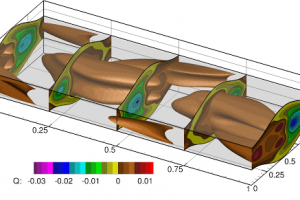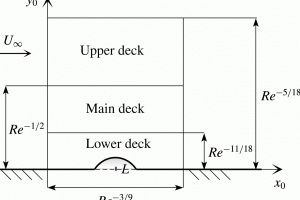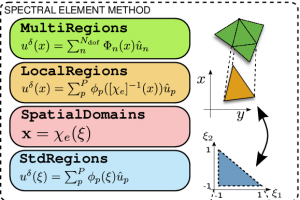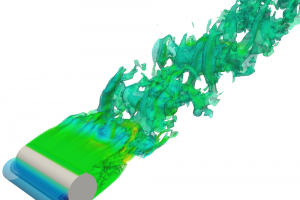Can hydrodynamic instability be used for mixing? And at the same time can conduits be shaped such that hydraulic losses are reduced? We think that it is Yes to both.
Nektar++ has been used to study various forms of hydrodynamic instabilities arising is a flow through a channel with corrugated walls. Stability analysis has been performed using direct numerical simulation and tracking growth, or attenuation of the unstable modes.
Nektar++ Workshop 2016
7th-8th June 2016
The purpose of this meeting is to bring together the Nektar++ developers and design team with users of any experience level within the broader community. More information is available here.
DOI: 10.1007/s10915-015-0119-z/fulltext.html
This paper investigates the connections between many popular variants of the well-established discontinuous Galerkin method and the recently developed high-order flux reconstruction approach on irregular tensor-product grids.
DOI: 10.1017/jfm.2015.281
This paper is concerned with the boundary-layer separation in subsonic and transonic flows caused by a two-dimensional isolated wall roughness. The process of the separation is analysed by means of two approaches: the direct numerical simulation (DNS) of the flow using the Navier–Stokes equations, and the numerical solution of the triple-deck equations.
DOI: 10.1016/j.cpc.2015.02.008
Nektar++ is an open-source software framework designed to support the development of high-performance scalable solvers for partial differential equations using the spectral/hp element method.
DOI: 10.2514/6.2014-2923
The nature of boundary conditions, and how they are implemented, can have a significant impact on the stability and accuracy of a Computational Fluid Dynamics (CFD) solver. The objective of this paper is to assess how different boundary conditions impact the performance of compact discontinuous high-order spectral element methods (such as the discontinuous Galerkin method and the Flux Reconstruction approach), when these schemes are used to solve the Euler and compressible Navier-Stokes equations on unstructured grids.
